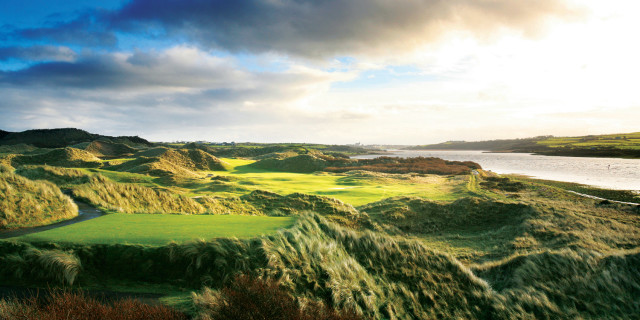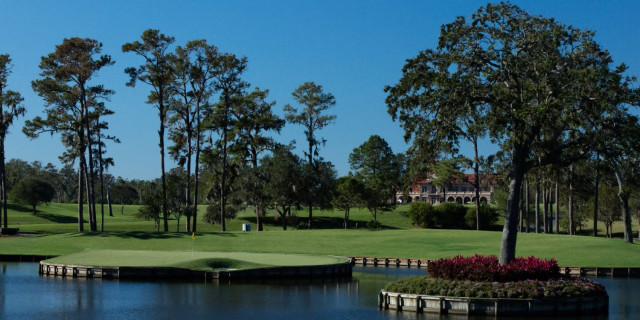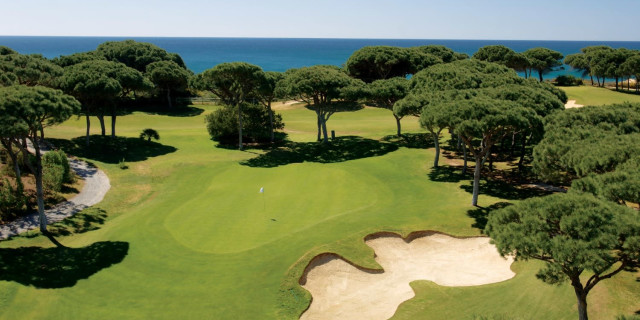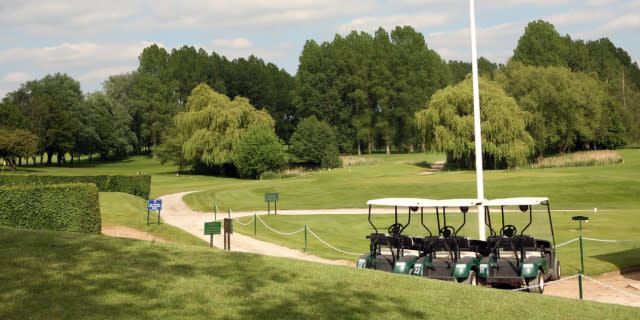Portstewart Golf Club Feature Review
Golfshake Ambassador Andrew Picken recently experienced the Causeway Tour in Northern Ireland, discovering many of the regional links that will be showcased when the Open Championship returns to Royal Portrush in 2019. Here is Andy's review of Portstewart Golf Club, host of the Irish Open in 2017.
Portstewart Golf Club was formed on Boxing Day 1889 by a local solicitor who organised a tournament designed to appeal to the Christmas tourists visiting the area.
The revered venue boasts three 18-hole courses blessed with some of the finest natural surroundings in the world. The Strand at a par 72, 7,004 yards is the most prestigious particularly given the fact that it was the home of the Dubai Duty Free Irish Open in 2017, won by Jon Rahm. It is supported by Riverside and the Old Course. Unfortunately we did not have the time to play all three but my experience taking on the Strand was more than enough to make me want to return.
Rated Highly Recommended on Golfshake
I have been fortunate enough to play some wonderful golf courses around the world and the front nine of the Strand will remain in my memory for a long time. The opening tee shot is intimidating and exciting in equal measure. The elevated tee illustrates a vista that few other courses have been blessed with. The beach allows vehicles onto it so don’t be phased by sites of parked cars and surfers on the sand.
20 Must Play Golf Courses in Northern Ireland
Please take a few minutes to review the flyover video of the course. It is an absolute stunner that provides a real flavour of the joys of this location.
I have been trying to find the best form of words to describe the experience of golfing on this course and all the words I have found have some kind of religious derivation. The second hole is played within a natural amphitheatre that is created by immense, overarching dunes.
When you walk into a place of worship your speech is automatically muted and refrained. This happened without prompting to our entire group as we played golf. The size and scale of this experience is very difficult to describe and share to do it justice. It is a natural golfing cathedral. The Marram grasses and sand dunes are as naturally created and they have simply been adapted to the needs of the golfer. These grasses are immensely strong and bind together the sand dunes. (I used some to haul myself up the side of Devils Hill to find a ball and they were strong enough to hold my weight. That’s strong!)
I would usually select a few holes from each nine to illustrate the course. This is the first course I have reviewed where it was necessary to provide a discussion on each and every hole for the front nine. It really is that good. Actually the first 12 holes are superb and then the course evolves into a very good links layout for the final six holes. Perhaps the excellence for the first 12 highlights the back six unfairly as they are still very good just not quite up to the superlative standard of the first dozen.
1st, Tubber Patrick, Par 4, 427 Yards
This has been voted one of Europe's finest opening holes. It is a real jaw dropper. From the elevated tee the hole expands in front of you. It shows you exactly where you need to play but hides the green and its apron completely. This is all about your ability to hit a pressure shot from the first tee.
The hole dog-legs left to right. The course planner suggested a shot to the left of the centre of the fairway thus leaving an easier approach to the green. I succumbed to the hole by pulling my shot to the left and ending up ten foot up the bank on the left. To retrieve my ball I literally had to combine golf and mountain climbing.
As I stood on the tee ready to play I let the view wash over me. The beach allows cars to use it and park and is populated by surfers throughout the year due to the quality of the surf. For instant golfing gratification it doesn’t get much better than this.
There are no bunkers, simply mother nature, and her design acumen. This is an incredibly challenging, imposing and beautiful tee shot. Out of position is no chance of par or bogey and I hacked my way forward to the green walking off happy with a seven after a long putt dropped. This is a magnificent opener, ranking as the second most difficult during the Irish Open in 2017.

2nd, Devils Hill, Par 4, 366 Yards
The fairway from the tee opens up slightly around the 230 yards marker. The hole manoeuvres itself left to right with the tee set deceptively away from the desired line of the shot. I dropped to a hybrid and played a comfortable shot to the left edge of the fairway but aided a playing partner looking for a ball that was hooked onto the hill side. The grasses holding this immense sand dune together were incredibly strong and supported my weight easily as I dragged myself up the hill side. Hill doesn’t do this justice it felt like a mountain, the dunes are so large and imposing at this point.
I've never come across grass that is so strong, but I suppose when it's exposed to the worst of the Atlantic weather it has to be for the dunes to survive.
The fairway doesn’t feel carved from the ground it feels an intrinsic part of the scenery but it is wonderfully tight turf with a spring underfoot that encourages pure ball striking.
It was a surreal yet beautiful experience to see the dunes on either side of the fairway. They are towering, imposing and majestic. A single pot bunker protects the right of the green. It needs nothing more given the slopes and swales that are naturally provided.
I was genuinely awestruck as I reached the second green it was like walking through a prehistoric landscape. I later discovered it was actually from the Neolithic age.
3rd, The Settlement, Par 3, 218 Yards
It is blessed with a kidney bean shaped green that sits protected by dunes and hills. My research revealed that the green was used as one of the first population settlements in Northern Ireland, hence the name of the green; The Settlement. This green sits naturally but beautifully in the dunes. One small pot bunker sits short and right. The green is protected by a host of sweeps and swales and runs that make this a difficult for any standard of golfer. This hole ranked as the most difficult during the Irish Open.

4th, Thistly Hollow, Par 5, 583 Yards
Accuracy from the tee is crucial, my shot was one of the best of that I played that day. I aimed to the right of the shoulder of the imposing dunes and struck the ball sweetly. It faded beautifully into the centre of the fairway and even though it was autumn and there had been some rain that morning the ball got an extra 40 yards of carry purely and simply by being in the right position on the fairway.
I was so excited when I reached the ball that I made a complete “Horlicks” of the second shot pulling it left onto a gargantuan dune. The green has a false front which adds considerably to the difficulty of the hole for mere mortals like me.
This is the hole that Jon Rahm eagled on the final day to beat the field by six shots at the Irish Open.

5th, Rifle Range, Par 4, 461 Yards
The green here is 58 yards long. It is long and thin and has groups of hollows and swales that allow for a myriad of pin positions. As suggested by its name this hole is relatively straight. During World War II the course was adapted and used as a rifle range for troop training. There is a fairway marker indicating the best line for the drive. The fairway has a number of ruffles that bisect it and I assume these would have formed the part of the range distance markers. There are still remnants of slit trenches to the right of the fairway. If your ball is in this vicinity then get ready to pick it up. This hole is all about accurate shot execution and good assessment of distances. There are two large dunes that provide shoulders to the access point of the green. It is an absolute beauty.

6th, Five Penny Piece, Par 3, 143 Yards
Two small but perfectly formed pot bunkers patrol to the front of the green. There are no options for layups. This hole has a naturally formed green area. There is a tee box and a green and very little playable ground in-between. Accuracy from the tee is absolutely paramount. The view from the tee is stunning. We literally as a group just stood and watched and slowly reviewed the panorama in front of it all with silly smiles on our faces. The green is heart shaped but has runs and hollows a plenty.
7th, Strawberry Hill, Par 5, 516 Yards
This hole is named after the wild strawberries that grow just off the fairway. This is a beautiful dog leg that runs from left to the right. It follows completely the natural contours of the ground. As you reach the elbow of the dog-leg the dunes seem to rise up in front of you. They appear to evolve from the ground as you play up towards them. Again no fairway bunkers, the majority of the protection being provided by nature herself.
8th, Portnahapple, Par 4, 445 Yards
Portnahapple translates as “The Port of the Horse” – a landing site in bygone days for horses and fishermen coming to Portstewart from Donegal. This is sited next to the Championship tee. The course planner suggests aiming for the stones behind the largest dune where the sea meets the land. The ideal tee shot will provide a position in the centre of the fairway giving a straight shot into the green. There is a severe 90° dog-leg left .The green is very well protected by a group of pot bunkers that will gobble up any short ball. I struggled with this hole having played an ineffective tee shot and pin-balled down the fairways from rough to gorse and back again. This is another tremendous golf hole.
9th, Larkhill, Par 4, 378 Yards
The tee is protected by an enormous sand dune to its right side. This also has the effect of tightening up the possible driving lines to the fairway that is partially concealed. There are swales and hollows on the fairway. I would suggest the safer line would be to favour the left centre portion as there are large drop offs if the ball is hit to the right centre of the fairway. These drop offs are large enough to merit the building of steps to allow you to get back onto the fairway! I loved this hole, it was three-dimensional chess played on a golf course.
10th Fishermans Walk, Par 4, 407 Yards
This was so named because it was a route taken by fishermen in days gone by to reach the River Bann. The first 200 yards of the hole are grass and gorse and a path. Realistically, if a ball is topped or short it is unplayable. Aim towards the two fairway bunkers and hope to carry them as this will give clean sight for the approach into the green. Anything slightly less committed will be blocked by another dune covered in grasses that rise like a dinosaur back from the earth.
11th, Fernside, Par 4, 407 Yards
Anything left of the fairway will be captured by the ferns that grow here. However the line from the tee is towards a diagonal necklace of bunkers to allow the second shot into the green. The bunkers have tightly shaved and manicured edges that increase the effective area of the hazard substantially from that seen off the tee. The green is elevated and has a large false frontage. The views from this fairway towards the green and the water are simply stunning. No bunkers near the green, they are not necessary given its small surface area and the protection afforded by the tightly mown surrounds.
12th, Barmouth, Par 3, 167 Yards
Please take a moment to enjoy the wonderful views towards Mussenden Temple and Donegal. The green is protected by a ring of five pot bunkers and fiendishly sloping green. The bunkers look small but again they have a substantial footprint due to the tightness of the cut of the grass that surrounds them. A par here is to be savoured.

Following that breathtaking opening two thirds of the course, I found the final two holes a little disappointing as they run parallel to each other and go from and then back to the clubhouse. They are still good, challenging links holes but I suppose I wanted more of the superb rollercoaster ride provided by the first dozen.
I absolutely loved Portstewart. The course is superb, it was challenging, distractingly different and superbly presented. It has tested the world’s best golfers and one of the worst (me) but it was a joyful, wonderful experience that I would seek to repeat again and again.
The green fees for 2019 are £230 for 36 holes on the Strand. Check out the website for member’s times to be avoided. Buggies can only be used with a medical exemption certificate.
There are two other courses available. I unfortunately did not have the time to play the Old or the Riverside. They have both been added to my bucket list for future play as I need no excuse to return to this wonderful location and sample again the welcome in the clubhouse and fabulous food on offer.
Image Credit: Kevin Murray and Golfbreaks.com
Related Content: review Northern Ireland Ireland Courses

















